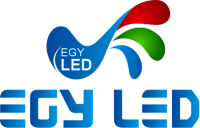6 questions about LED screen

6 questions about LED screen
The field of LED display screens is very important for a lot of customers around the world, so we will replay 6 questions about LED screen to to explain the importance of these screens.
- What does the term LED mean and what does stand for?
- What does the term pixel mean?
- What is the difference between DIP and SMD in advertising screens?
- What are the advantages of LED screen ?
- How to choose the right pixel size for your screen?
- What are types of LED screen?
1- What does the term LED mean and what does stand for?
One of 6 questions about LED screen. The term LED stands for (Light Emitting Diode), which means light-emitting diode An LED is a device that emits light when an electric current passes through it. LED first appeared in 1962 as electronic components that emit only low intensity red light.
However, the recent versions are very bright and are available in many other colors. It is mainly used in various electronic devices such as watches, light bulbs, mobile phones, monitors and many more. Since LEDs have a longer lifespan and are more energy efficient than regular bulbs, many industrial companies have used them in their products, especially in home environments.
2- What does the term pixel mean?
If you are looking for digital signage for your brand then pixel pitch is the industry term you will have to get used to so when it comes to finding the right screen it is important to know the pixel pitch that way you can understand what is appropriate for a successful image display.
In layman’s terms a pixel pitch is the total distance between pixels usually measured in millimeters and is a measure from the midpoint of a pixel to the midpoint of an adjacent pixel When the pixel pitch is smaller the LED will be closer and result in higher resolution quality.
Higher pixel pitch means more space between pixels as such you get lower resolution Smaller pixel pitch LED display relates to resolution for optimum viewing distance When the number is small more pixels are used to make the image on the screen this way it improves display resolution and optimum viewing distance.
This means that when the pixel pitch is small, the viewer can have good resolution even when standing close to the screen. While a small pixel pitch LED display improves picture quality, it comes at a hefty price. In short, when you have more LED clusters on the screen, the pixel pitch will be Less and your expenses will be higher.
However, you can cut costs without compromising display quality by choosing a large pixel pitch, provided your audience is not too close to the screen. However, if there is not much space between the screen and your audience, a small pixel pitch of 4mm is a must.
If you want to hang the screen higher and farther from your audience such as airport signage, 6mm LED display should be the best choice. Images from the LED screen with small pixel pitch make the image edge clear and the information is accurately restored.
3- What is the difference between DIP and SMD in advertising screens?

DIP and SMD
The most common type in outdoor advertising screens is the DIP, which is short for (dual in-line package), as it has the ability to give higher brightness, greater resistance to weather factors, and better heat dissipation, since the entire LED is far from the panel and is connected to the panel only by two legs ( The anode and the cathode) and the plate in this case has openings for the passage of the feet of each LED.
And they are soldered from the other side through tin and connected to the circuit while covering them with glue as an insulating material for water and moisture (GLUE) and this type is suitable for large screens that do not need high accuracy in pixels The screen is that the size of the LEDs is rather large.
As for the other type, which is SMD, which is an acronym for (surface mounted technology), it is more suitable for indoor environments because it is characterized by the small size of the LED, which allows it to be used in screens that need high accuracy and has a wider viewing angle and does not produce heat High, it is more efficient in the use of energy and less expensive in production.
4- What are the advantages of LED screen ?
One of the most important 6 questions about LED screen .
- Long life, up to 100,000 hours of continuous operation.
- Saving electricity consumption due to the famous LED technology.
- The flexibility of the design and its suitability with any place and any project easily.
- The intensity of lighting with the clarity of colors, and this is the secret of its high ability to attract attention.
- Environmentally friendly, as there is no mercury or ultraviolet radiation.
- It works on a low voltage and does not need a high current.
- Ease of dealing with it and changing the content through the attached program.
For more information’s about EGYLED products, Click here.
5- How to choose the right pixel size for your screen?
And due to the large number of models with different prices, you must check during your choice to get the right size for you. You must first determine the target viewing distance, that is, the distance between the screen and the person watching.
Display distance.
Pixels or “PH” or “P”, which means Pixel Pitch or the distance between each two pixels on the screen. For example, the screen of the P5 model means that the distance between each two pixels is 5 mm and the resolution is 40,000 pixels / square meter.
The smaller the PH value, the higher the pixel resolution and the smaller the viewing distance. Therefore, if you want to have a close viewing distance, you have to take small pixel model like P1.5, P2.5, and you can’t take large pixel distance like P5, P4.
Size display.
The size which is less than 10 square meters, P10 outdoor LED display is recommended. From the above, we can conclude that there is a relationship between viewing distance, area, and screen resolution. You must specify your requirements accurately so as not to pay a higher cost than required.
For more information’s about EGYLED solutions, Click here.
6- What are types of LED screen?
One of the most important 6 questions about LED screen. The types of advertising LED displays screen are mainly divided into indoor advertising LED displays and outdoor advertising LED displays according to their installation places. EGYLED advertising LED display is durable and excellent in performance, and can display advertising content in various occasions such as outdoors, semi-outdoors, and indoors.
Indoor LED Display
Indoor LED display is an LED display screen installed in an indoor environment and is widely used in indoor places. Compared with other types of LED displays, indoor LED displays have high refresh rate, high brightness, high contrast and color reproduction, and the display effect is clearer, brighter and more vivid.
Indoor LED displays are divided into P2.5, P3, P4, P5, and P1.8and other specifications. The larger the number behind the number, the sparser the screen pixels. EGYLED provides high-quality, high-stability indoor advertising LED displays, featuring ultra-light weight, ultra-thin thickness, easy maintenance, and easy installation.
Outdoor Advertising LED Display.
Outdoor advertising LED displays are widely used in large outdoor plazas, stadiums, cultural and entertainment centers, highways, etc., with IP65 dustproof and waterproof functions, which can withstand harsh weather conditions in outdoor activities. Outdoor display screens are divided intoP4, P5, P6, P6.67 and other specifications.
EGYLED outdoor advertising LED display cabinet is light, portable and easy to maintain, which not only saves time but also saves cost. Thus, we have clarified the most important 6 questions about LED screen,

